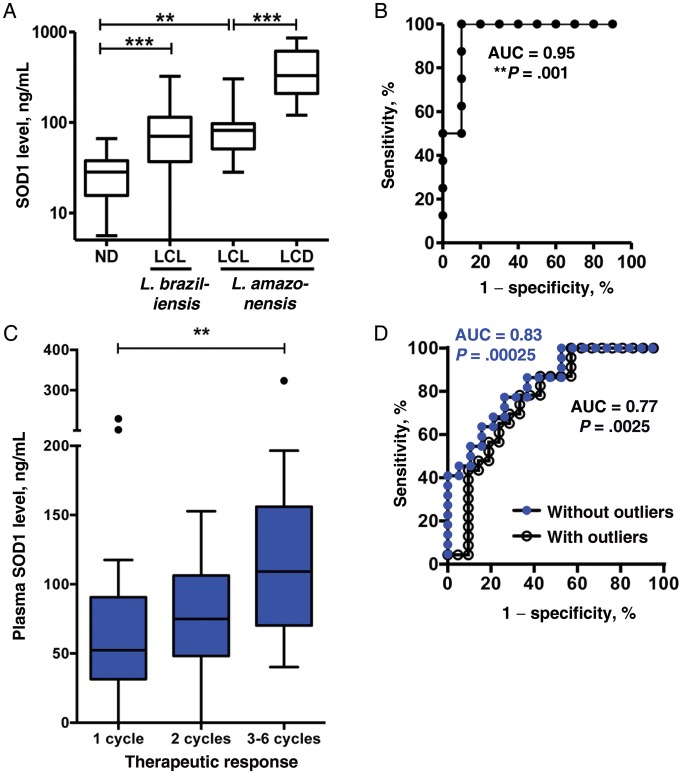Figure 1.
Superoxide dismutase 1 (SOD1) is a biomarker for therapeutic failure in cutaneous leishmaniasis. A, SOD1 measurements in plasma samples from 20 healthy controls, 58 patients with localized cutaneous leishmaniasis (LCL) due to Leishmania braziliensis), 10 patients with LCL due to Leishmania amazonensis, and 8 patients with diffuse cutaneous leishmaniasis (DCL) due to L. amazonensis. Box plots represent the median and interquartile range of each group. P < .001, by the Kruskal–Wallis test; and ***P < .001, by the Dunn posttest, for healthy controls vs patients with LCL due to L. braziliensis; **P < .01, by the Dunn posttest, for healthy controls vs patients with LCL due to L. amazonensis; and ***P < .001, by the Mann–Whitney U test, for patients with LCL due to L. amazonensis vs patients with DCL. B, Plasma SOD1 level significantly discriminates patients with LCL due to L. amazonensis from patients with DCL due to L. amazonensis (area under the receiving operating characteristic [ROC] curve, 0.95; ***P = .001). C, SOD1 measurements in plasma samples from patients with LCL due to L. braziliensis, classified according to number of treatment cycles (P = .0069, by the Kruskal–Wallis test; **P < .001, by the Dunn posttest). Three outliers (by the Tukey test) are shown as single dots. D, Plasma SOD1 level significantly predicts therapeutic response in patients with LCL due to L. braziliensis (success is defined as achievement of cure after 1 treatment cycle; failure is defined as lack of cure after >2 treatment cycles; area under the receiving operating characteristic curve, 0.83; ***P = .00025, without outliers, as in panel C).

